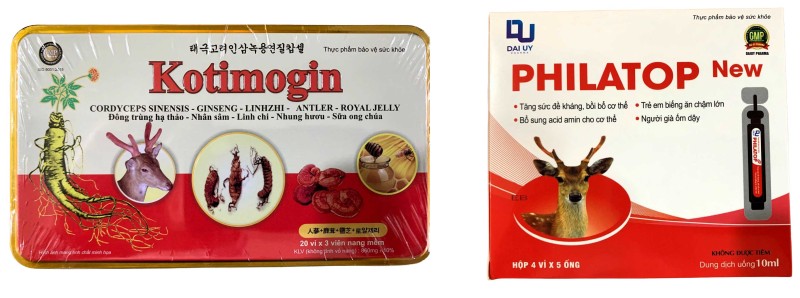Nov 7, 2025

The Vietnamese pharmacy market is dominated by three main players, but online platforms are fast becoming a channel of choice for the country’s younger, more progressive consumers.
Market access the essential first step
Vietnam presents a promising long-term opportunity for New Zealand deer products, but meaningful commercial outcomes are contingent on one thing: improved market access. Per a recent market visit by DINZ Trade and Strategy Manager Damon Paling, MPI is actively engaging with their counterparts in Hanoi to enable formal recognition of our systems. While progress is incremental, and we must compete for attention among Vietnam’s wider trade reform priorities, the goal is clear — a systems audit in early 2026 to allow for official access, registration of facilities, and legitimate trade.
DINZ continues to support MPI's efforts, and Vietnamese businesses are monitoring this closely. From what we observed through direct engagements in Hanoi and Ho Chi Minh City, underlying knowledge of, and demand for, deer velvet and co-products exists. Once official market access is confirmed, commercial partnerships can commence.
Sizing a realistic market opportunity amongst affluent consumers
Vietnam’s macro-economic outlook is strong, with an 8% GDP growth forecast annually over the next 10 years. This is underpinned by ongoing government reform, as well as investment into education and infrastructure, which is delivering rising disposable income. The next decade offers a rare alignment of policy, demography, and consumer demand.
Vietnam’s cultural foundations draw heavily from southern China through centuries of migration and imperial influence, embedding Confucian values of hierarchy, education, and duty to family. This shared civilisational heritage aligns Vietnam’s worldview, health beliefs, and traditional medicine/health food consumption habits more closely with China and South Korea than with the rest of Southeast Asia.
While Vietnam is home to over 100 million people, it has only a high-income segment of 5–6 million urban consumers — concentrated in Hanoi and Ho Chi Minh City — who can afford premium health and wellness products. They are health-conscious, open to traditional remedies that are delivered in convenient product formats, and value product safety and efficacy. Moreover, these consumers are already conditioned to paying a premium for New Zealand products through the dairy and horticultural sectors.
Value chain with co-creation, not just commodity sales
DINZ’s market visit in October 2025 confirmed that local players are not looking for generic product — they’re looking for partnerships. Vietnamese companies want ingredients they can trust, stories they can tell, and points of difference they can take to market.
This would include registering and positioning velvet and co-products as “functional food”, with claims to match. While a simple registration as “general food” would be easier, it could also undervalue the offering; on the other hand, a registration as “pharmaceutical” may be a step too far at this point in time.
Activation of offerings to consumers could include:
- Traditional formats blended with local herbs and other ingredients
- Powdered or encapsulated velvet and co-product offerings
- Substantiation of claims and label language co-developed for compliance
- Co-branded products launched via live commerce platforms
- New Zealand farm storytelling captured by visiting influencers
Vietnamese consumers already trust Kiwi brands in dairy and horticulture. These tailwinds are helping elevate the New Zealand provenance story, and deer products can ride that same wave — at the premium end of the market, with functional food accreditation.

Samples purchased at various pharmacies in Ho Chi Minh City show a familiarity with deer velvet.
Health, convenience, and premium appeal
The potential “hero” product format may be capsules or sliced powder blends, targeting wellness and energy. These will be marketed through Vietnam’s booming e-commerce channels (Shopee and TikTok Shop) and supported by trusted influencers and “shoppertainment”. Retail trends suggest strong upside for brands that engage consumers through video content and lifestyle positioning. Live commerce, once a novelty, is now a daily ritual. Getting product-market fit and channel execution right is critical.
Tailoring messaging to regions to capture volume across Vietnam’s differing consumption cycles is also a consideration. This may consist of leveraging seasonal consumption behaviour in the North or among older generations while driving year-round demand in the wealthier and commercial South for the younger generation through more modern formulations that address recovery, stress, focus, and performance narratives.
Looking ahead to next season and a possible launch
A lot of work is required, both on the regulatory and commercial fronts, but momentum is building. A best-case scenario would see the systems audit proceeding as hoped in the first half of 2026, followed by deer products being officially permitted for import later in 2026. This may open the door to a pilot commercial project during the 2026/27 season, with a potential first product launch for Vietnam’s Tet festival (Lunar New Year) in early 2027.
A product launch at Tet — Vietnam’s most culturally significant and emotionally powerful time of year — would be a fitting symbol of long-term partnership, trust, and value creation between the New Zealand deer industry and Vietnam’s rising wellness economy.

